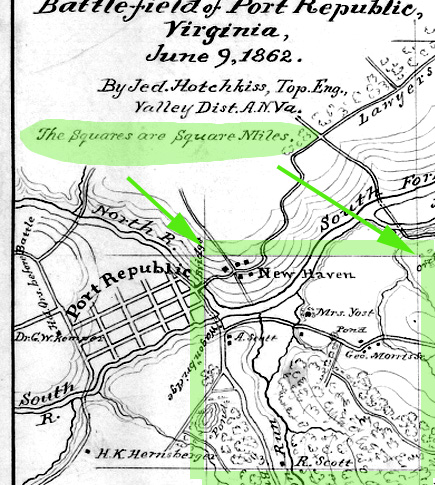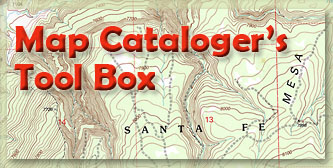
|
In the map at left, the cartographer noted the map scale with a phrase:
"The Squares are Square Miles"

From this we can measure the length of a "square" to use in calculating the map's "Scale."
The length of the square equals 1 inch. Since the map states that the square is equal to 1 mile, we can determine scale by the following:
- divide 1 mile (5,280 feet) into inches = 63,360 inches.
- Since 1 inch on the map = 1 mile on the ground
- the scale is 1:63,360.
Enter the 255 as follows:
|
255 Scale [1:63,360]. |
| The brackets show that the scale was derived by calculation, rather than from actual statement on the map. The following would also be acceptable: |
|
255 Scale [1:63,360. 1 in. on map = 1 mile]. |
|
Scale is always determined by taking map and ground measurements and breaking them to a common denominator (in this case, inches), to arrive at a comparable set of numbers.
The first number (map measurement) is always "1" (which could be 1 cm., 1 m, 1 foot, 1 inch, etc.).
The second number (ground measurement) is always calculated so that the resulting number equals the same unit of measurement as the "1" on the ratio (in the above example, ground scale needs to be converted to inches). This provides the representative
fraction.
Handy calculators are available online. Here are several examples:
|



